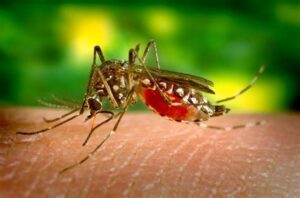Yet another baffling virus, I was recently inspired by a client to write about West Nile. She was  persistent about making me understand that the existing conditions she experiences stem from this previously contracted virus from 1998. As with so many viruses, and is also true for West Nile, some people do not experience any symptoms, some experience severe conditions and for some, it wreaks havoc by creating a persistent, systemic inflammatory response.
persistent about making me understand that the existing conditions she experiences stem from this previously contracted virus from 1998. As with so many viruses, and is also true for West Nile, some people do not experience any symptoms, some experience severe conditions and for some, it wreaks havoc by creating a persistent, systemic inflammatory response.
The lingering conditions that arise for people may make it difficult to distinguish from other illnesses, and can therefore be dismissed as something else… completely missing the root cause. For example, lingering conditions of West Nile include decreased stamina, replaced by joint pain, sudden tiredness, fatigue and muscle aches (and a myriad list of other conditions). In health care, the term “chronic” is defined by any condition that lasts beyond six months. In Chinese medicine we refer to this as a “lingering pathogen” see last month’s article, May 2022 http://daisylear.com/lingering-pathogen/. West Nile is quite a kunundrum, and quite frankly, I was surprised when this person began feeling better throughout each day, able to complete physically challenging work without needing to rest as often. The combination of Chinese herbal formulas and using techniques to nourish and regulate the immune system is helping beautifully.
I found this outstanding pbs/nova article about West Nile that combines research with personal experiences. My client found some comfort in reading this and we hope this information helps others as well :
https://www.pbs.org/wgbh/nova/article/post-infection-symptoms/
Here is some dry government reading, (however just as important) taken from the EPA.gov website : West Nile virus was first detected in the United States in 1999 and is now the most common cause of mosquito-borne disease in the United States in most years. While many infected people feel no symptoms, others can experience symptoms such as headache, body aches, joint pains, vomiting, diarrhea, and rash, as well as more severe damage to the central nervous system in some patients, causing encephalitis, meningitis, and occasionally death.2 From 1999 to 2019, a total of 51,801 cases of West Nile virus disease were reported in to the U.S. Centers for Disease Control and Prevention (CDC). Nearly half of the reported cases of people infected with West Nile virus were neuroinvasive—that is, affecting the brain or causing neurologic dysfunction.3 Mosquitoes acquire the virus by biting infected birds, which are the main hosts of the virus. People are then infected when they are bitten by these virus-carrying mosquitoes. https://www.epa.gov/climate-indicators/climate-change-indicators-west-nile-virus
Most importantly, I’d like to encourage people to ask questions, keep learning and advocate for themselves especially when enduring a chronic illness. Sometimes it takes enduring commitment to disentangle pathogens from the system. Some of the most challenging chronic illnesses are due to viruses that do not completely leave the system such as west nile, lyme disease, malaria, ‘long-haul covid’ and herpes – for which there are no immunizations. Once these are in the system, management is key. More information about lingering pathogens and other subjects can be found on my website, daisylear.com under the articles tab.